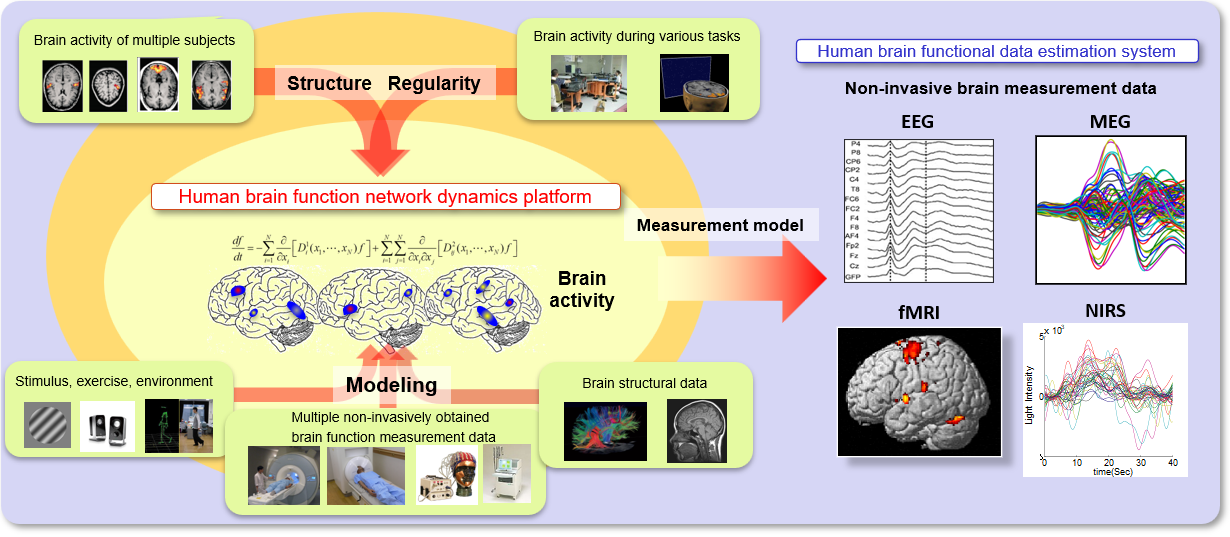Simulator for brain activity measurement data
In human neuroscience, there is a community for each measurement method, such as magnetoencephalography (MEG), functional magnetic resonance imaging (fMRI), electroencephalography (EEG), and near-infrared spectroscopy (NIRS). However, these communities have not always smoothly communicated with each other. By building a simulator that predicts these four measurement data, CBI attempts to provide a framework for understanding the results of a given measurement in an integrated manner.
Source current and dynamics estimations are methodologies for elucidating the mechanisms of brain activity from measured data. In contrast, the simulator predicts measurement data from the estimated mechanisms of brain activity. Combining the methodology of dynamics model estimation and MEG/EEG/fMRI/NIRS measurement models, we predict each type of measurement data under certain experimental conditions.
The movie below shows predicted MEG, EEG, fMRI, and NIRS during face perception.
The simulator helps us to efficiently optimize an experimental design by virtually iterating experiments and analyses. In addition, by manipulating the parameters of the dynamics model in the simulator, it will be possible to simulate brain damage. We expect this outcome to bear fruit in clinical applications.
This research was supported by a contract with the National Institute of Information and Communications Technology titled “Development of network dynamics modeling methods for human brain data simulation systems” (173, FY 2013–2017).
